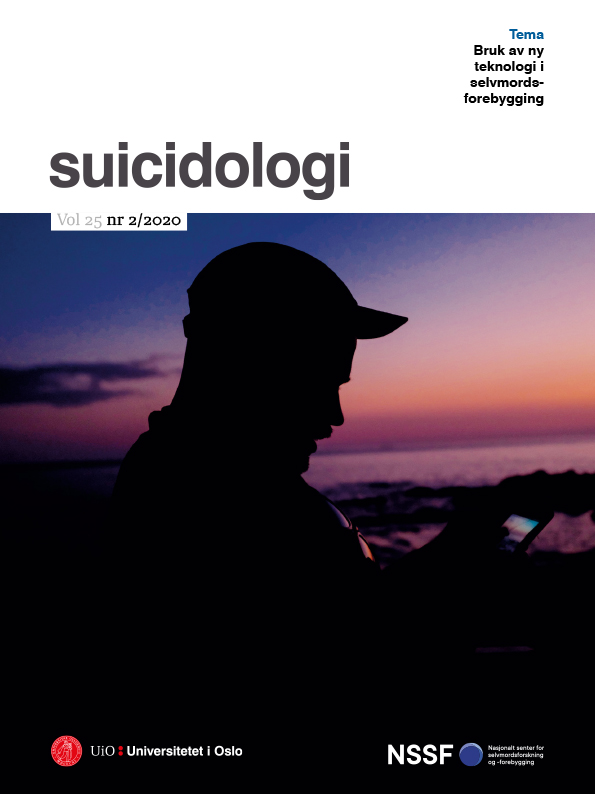Barn og unges selvmordsytringer
Kartlegging og analyse av barn og unges selvmordsytringer i samtaler med en nettbasert hjelpelinje
DOI:
https://doi.org/10.5617/suicidologi.8548Abstract
An increasing number of children and young people contact the Red Cross’ online chat service «Kors på halsen», to
talk about suicidal thoughts. Through analysis of 200 chat conversations with Kors på halsen from adolescents between
11 and 20 years, this study aims to provide knowledge about what particularly characterizes the utterances of adolescents
who explicitly say that they have suicidal ideation. Based on statements and words used in the chat conversations, 59
variables were delineated to describe relevant concepts and utterances and further analyzed by the expressed suicidal
ideation. Of the 200 conversations, 125 (62.5%) adolescents stated clearly that suicidal ideation was the primary reason for
contacting Kors på halsen. Self-harm, depression and anxiety were the most common ailments, while loneliness, bullying,
violence and abuse, as well as lack of support were common complaints. Furthermore, many reported poor relationships
with parents (19.5%), poor well-being at home or at school. When it came to help-seeking behavior, many said that it was
difficult to explain, or that they did not know what to say when seeking help (30%), and they were afraid that parents would
be disappointed (20.5%). Many also said that they wanted help now (17.0%), but that they were reluctant to seek help
(18.0%). In total, 14 relevant concepts and utterances were found to be positively associated with suicidal ideation as the
primary reason for contact (p <0.5). Individually, «depression» was the variable with the highest odds (OR = 10.88), followed
by self-harm, bullying, previous or recent suicide attempts, not wanting to tell others, feels that things are tough, and wanting
help now. These insightful results underscore the importance of implementing suicide prevention program in children and
adolescents, and the measures should be broad in scope to accommodate the great variety of problems in their
everyday life.
Downloads
Published
Issue
Section
License
Authors who publish with this journal agree to the following terms:
- Authors retain copyright in accordance with the Norwegian Copyright Act (link in Norwegian), and grant Suicidologi right of first publication with the work.
- Authors are able to enter into separate, additional contractual arrangements for the non-exclusive distribution of the journal's published version of the work (e.g. post it to an institutional repository), with an acknowledgement of its initial publication in this journal.
- Readers of Suicidologi may only use the journal's content in accordance with the Norwegian Copyright Act.


